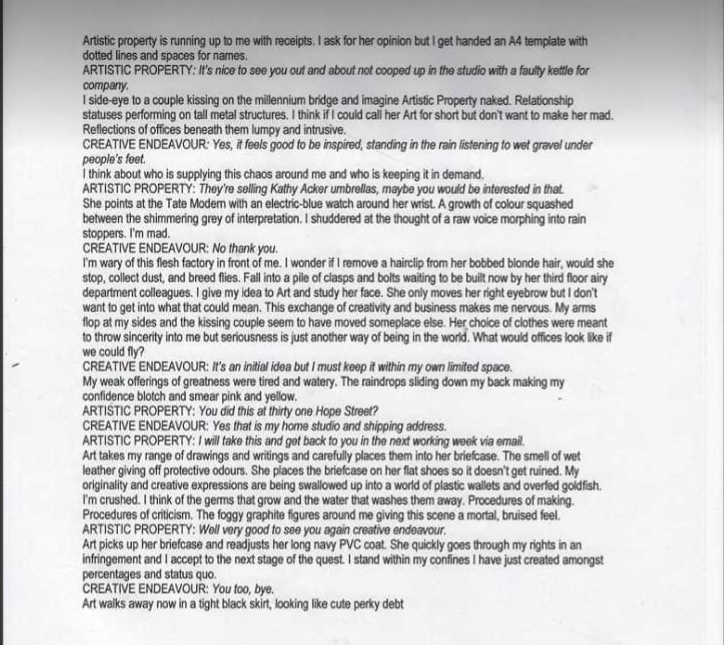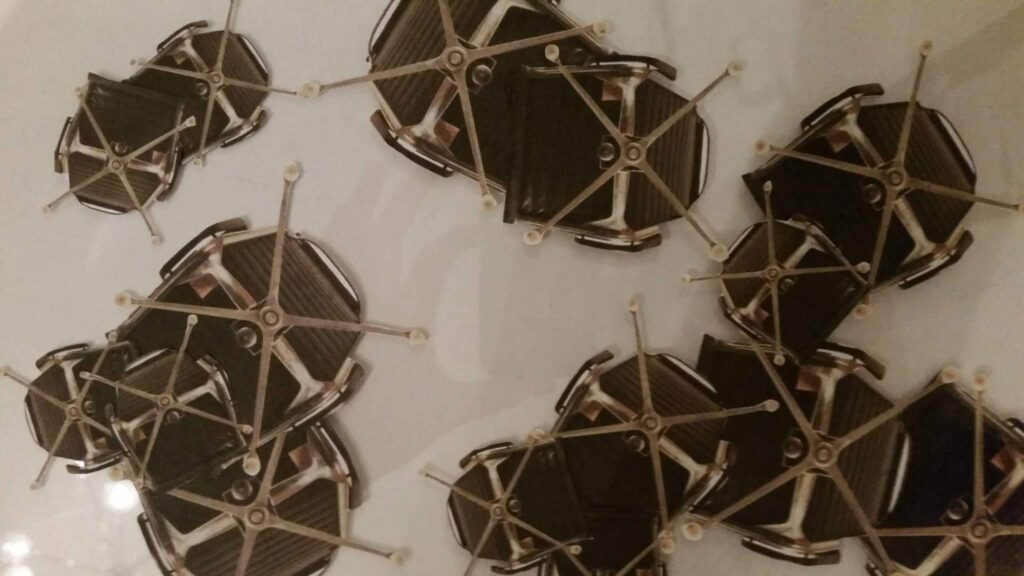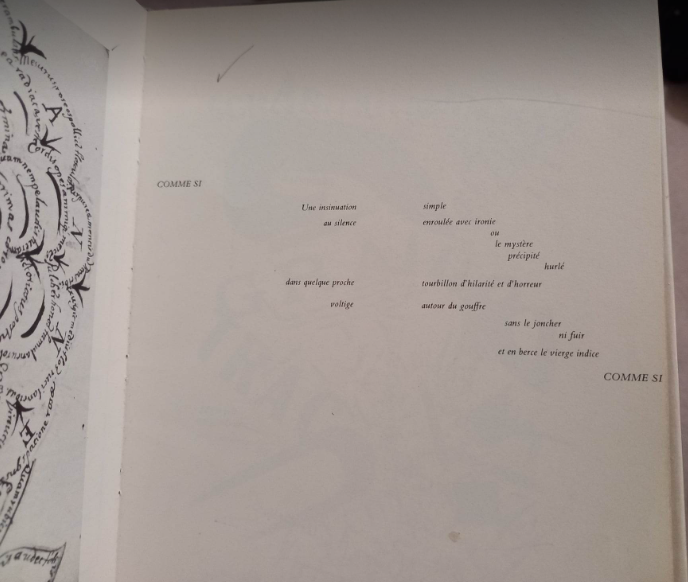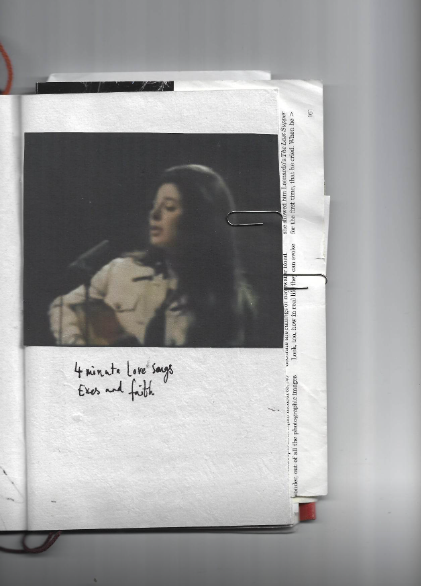

^work i had shown in 2019 at Pie Factory, Margate
imagetext
image-text (1).
In this exhibition I wanted to bring textual and visual material I had been working on together. I was looking at terminology for certain space e.g. office/gallery/learning environments and how these can be, as literally as possible, be transformed into images. The above image shows the underside of chairs which reminded me of microscopic bacteria imagery; by arranging the chairs in this way they come to resemble depictions of germs, highlighting populating of ideas, restrictions of art language, and art markets. It’s interesting to think of one piece being more persuasive than the other, what would be seen first, and how they would be looked at. Feedback reflected on the direct and narrative nature of writing to be deemed the dominant part of the work, also a heavy use of imagery within writing could question the ‘need’ for a visual element.
Apart from these images, and some of me embarrassingly standing with the work holding beer taken by my then-boyfriend, I have no documentation of the exhibition. No way of showing how the white wall turned into a brick wall a metre away or how there were wall-to-ceiling pipes framing the work. So my low-fi documentation has split what was one work into two, making it much more difficult to explain it now in terms of text/image. Framing text is usually done inside a book where we know that turning a page means that something will be seen on the other side of it. But what about outside of this, how can text perform in a space?
Etymologically, the word text means a textile and the word line a linen thread. But texts are unfinished textiles: they consist of lines (the woof) and are not held in place by vertical threads (the warp) as a finished textile would be (2). Can these unfinished textiles be held in place with images? Weaving implies an interlacing of individual observations/theories/practices to adjoin in creating a body of work/text. This is how I see my exhibition forming, a weaving of works that come together under a Text and Image title with threads in-between that connect artworks.
The Word as Image takes root from the historical, how language can be informed by the visual and how this shapes writing today. When speaking of Stephane Mallarme’s Un Coup de Des Jamais N’Abolira le Hasard, Berjouhi Bowler describes this visual poem as: the images change as the words regroup before our eyes- now reading across, now down, now up. How the words fall looks like an accident, unwilled, without design and without a designer (3). The visual element of poetry can change how it is read and make the viewer perform it rather than simply consume text. It can bring us closer to its content and allow its audiences to fully engage, or be a part of, with its meaning. (see below image).

Stephane Mallarme’s Un Coup de Des Jamais N’Abolira le Hasard
I have also been looking into Artist Books and the purpose artists have in putting together a book as artwork. ECA library holds a vast array of artist books that can be viewed when asked at the library desk. Within In the Context of Reading, Susan Viguers states the graphic presence of words gives way to their semantic meaning. For such text to be considered part of an artist’s book, however, words must be sufficiently informed by their visual form that we are nudged into at least some consciousness of their graphic identity. Like in The Word as Image, we are being welcomed to open up an artist’s idea and be a part of it, performing with it and engaging with it on a higher level to reach a more semantic meaning. Kurt Allerslev, in Freedom of the Presses, mentions, like a river, its changing as you open it. As the pages turn. And it changes as it sits on the shelf. A library full of books is a whirlpool of persistent change. We want text to solidify language, but it is too fluid (5). I like the connotation here of the library as time-capsule; a container of ever-evolving sentients, of what the audience is required to fulfil.

Page/print- from 3rd year undergrad, I ‘framed’ research as visual proposing the performativity of engaging with research and the imagery that comes out of ‘using’ it- cuttings/notes/drawings- making and keeping an archive.
1 Amihay, O. & Walsh, L. The future of text and image : collected essays on literary and visual conjunctures / edited by Ofra Amihay and Lauren Walsh. Newcastle upon Tyne: Cambridge Scholars Publishing, 2012.
2 Does Language have a Future (pg. 66). Vilém Flusser, Nancy Ann Roth, Mark Poster. University of Minnesota Press, 2011.
3 The Word as Image (pg. 13). Berjouhi Bowler. Trigram Press. 1970.
4 In the Context of Reading. Susan Viguers. Journal of Artist Books, Issue 20 (pg. 16). 2003
5 Freedom of the Presses (pg. 4). Artists’ Books in the Twenty-First Century. Marshall Weber. Booklyn, 2019.


Leave a Reply